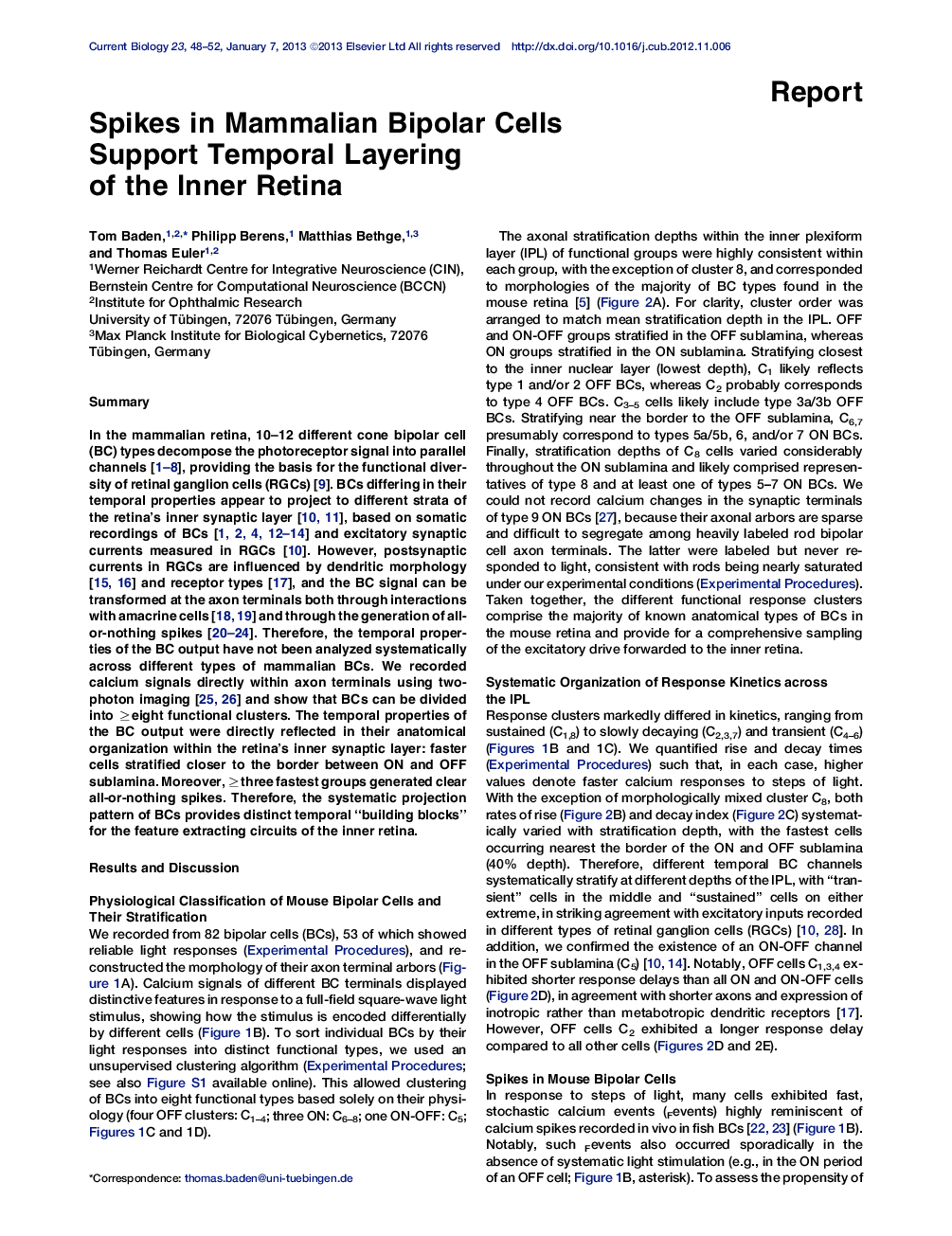| کد مقاله | کد نشریه | سال انتشار | مقاله انگلیسی | نسخه تمام متن |
|---|---|---|---|---|
| 2043182 | 1073330 | 2013 | 5 صفحه PDF | دانلود رایگان |

SummaryIn the mammalian retina, 10–12 different cone bipolar cell (BC) types decompose the photoreceptor signal into parallel channels [1, 2, 3, 4, 5, 6, 7 and 8], providing the basis for the functional diversity of retinal ganglion cells (RGCs) [9]. BCs differing in their temporal properties appear to project to different strata of the retina’s inner synaptic layer [10 and 11], based on somatic recordings of BCs [1, 2, 4, 12, 13 and 14] and excitatory synaptic currents measured in RGCs [10]. However, postsynaptic currents in RGCs are influenced by dendritic morphology [15 and 16] and receptor types [17], and the BC signal can be transformed at the axon terminals both through interactions with amacrine cells [18 and 19] and through the generation of all-or-nothing spikes [20, 21, 22, 23 and 24]. Therefore, the temporal properties of the BC output have not been analyzed systematically across different types of mammalian BCs. We recorded calcium signals directly within axon terminals using two-photon imaging [25 and 26] and show that BCs can be divided into ≥eight functional clusters. The temporal properties of the BC output were directly reflected in their anatomical organization within the retina’s inner synaptic layer: faster cells stratified closer to the border between ON and OFF sublamina. Moreover, ≥three fastest groups generated clear all-or-nothing spikes. Therefore, the systematic projection pattern of BCs provides distinct temporal “building blocks” for the feature extracting circuits of the inner retina.
Graphical AbstractFigure optionsDownload high-quality image (326 K)Download as PowerPoint slideHighlights
► Light-driven calcium changes were recorded in mouse bipolar cell axon terminals
► Bipolar cells cluster into ≥eight functional types, which match anatomical types
► Fast and slow bipolar cells project to the inner retina in an organized manner
► The fastest bipolar cells generate clear all-or-nothing spikes
Journal: - Volume 23, Issue 1, 7 January 2013, Pages 48–52